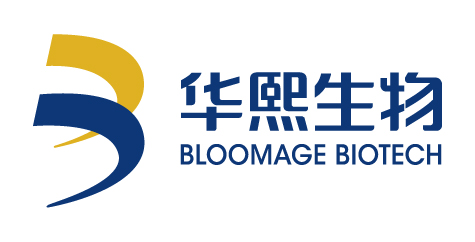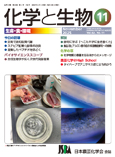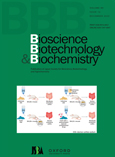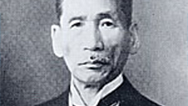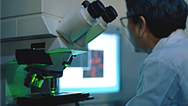The history of our society’s name
The original Japanese name of Japan Society for Bioscience, Biotechnology, and Agrochemistry (JSBBA) is Nougei-Kagaku (農芸化学), which is composed of four kanji characters. The word kagaku means chemistry, and its use is fairly common in Japanese society, whereas the word nougei is very unique to our society and research field. In particular, the combination of the Chinese characters nou (agriculture) and gei (arts) makes the word unique. The following sections shed light on who coined this name, when it was coined, and against what background it was created and became established.
Nougei-Kagaku began to be used as a translation of the German term Agrikulturchemie and the English Agricultural Chemistry when Western European sciences were introduced in the early years of the Meiji era (1868–1912). Back then, the term nougei-hin was already used for “agricultural products,” and its use has persisted since. Similar to the terms kōgei (crafts), jugei (arboriculture), and engei (gardening), nougei-hin not only means agricultural products but also the technical processing that they undergo.
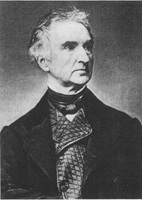
Justus von Liebig(1872)
The person who made the greatest contribution to creating the early academic field of agricultural chemistry was the German chemist Justus von Liebig (1803–1873). He established the theory of “law of the minimum” for plant nutrition and played a major role in the development of agricultural production with mineral fertilizers. Liebig addressed various contemporary issues of social interest that were associated with chemistry, particularly analytical chemistry, in Europe and studied “Agricultural Chemistry” as well as “Animal Chemistry” on animal nutrition and disease. He is said to have laid the foundation of the broad academic field of nougei-kagaku, including food chemistry, fermentation chemistry, and environmental chemistry.
Incidentally, in 1876, on opening of Sapporo Agricultural College, Japan’s first agricultural school, the school curriculum included a subject called “Agricultural and Analytical Chemistry.” The lecturer in charge of this subject was David P. Penhallow (1854–1910). Back then, all lectures by foreign teachers at the college were exclusively conducted in English; however, it is uncertain whether the Japanese term nougei-kagaku was coined through translation of the name of this subject.
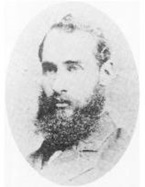
Edward Kinch
At around the same time, the government recruited several foreign teachers working in various fields from the UK to establish a full-fledged agricultural school in Tokyo. Initially, the plan was to select an “analytical teacher” as one of these recruits. However, in June 1876, when the government recruited Edward Kinch (1848–1920), who was then a teacher at the Royal Agricultural College at Cirencester in England, he was hired as a Nougei-Kageku teacher in the Japanese translation of his employment contract. The translator was Muneyasu Suzuki. Although the original English version of the contract has not been confirmed, this is, to date, the earliest use of the term nougei-kagaku that can be confirmed in documents.
At that time, books and studies on agricultural chemistry were often translated as either nougyo-kagaku (農業化学) or nouyo-kagaku (農用化学), and a period when the merged term nougei-kagaku was used persisted for a while. However, the term nougei-kagaku, consisting of the character gei (芸), which pertains to technology and art, gradually came into use, possibly because it was assumed to be appropriate for studies in which chemistry was applied to agricultural resources and products and even to physiology.
As the first “nougei-kagaku teacher,” Kinch came to Japan in 1877 and began lecturing on nougei-kagaku at the Komaba Agricultural School, which was newly established then in Tokyo. Moreover, the department of nougei-kagaku was established in the same year. Until his return to the UK in 1881, Kinch reported about studies of chemical analysis of different agricultural products and resources, including foods peculiar to Japan, water used at the Tomioka Silk Mill, pigments used for Japanese indigo dyeing (aizome), guano fertilizer produced in the Kansai area of Japan, and salmon in the Shinagawa Bay. His contribution to Japan’s agriculture and agricultural sciences is immense, and therefore, he is the leading figure in the establishment of nougei-kagaku not only at Komaba Agricultural School but also across Japan.
Upon Kinch’s departure, Oskar Kellner (1851–1911) was invited from the Agricultural Academy in Hohenheim, Germany to teach at the Komaba Agricultural School. Kellner conducted education and research at Komaba Agricultural School from 1894 until 1893, when he left Japan. He is known to have established the basics of the modern science of nougei-kagaku. The field he used for test plants still exists in the Komabano Park of Meguro-ku; it is known as “Kellner’s paddy field” and is annually cultivated by high school students.

From the left: Oskar Kellner, Oscar Loew, Yoshinao Kozai, Umetaro Suzuki
Students of Kellner and his successor Oscar Loew (1844–1941) continued to lead the development of nougei-kagaku science even after the foreign teachers departed. For instance, Kellner’s direct disciple, Yoshinao Kozai (1864–1934), studied contemporary issues of social interest in Japan, including analysis of and research on the Ashio Copper Mine Pollution Incident.
On July 1, 1924, 18 years after Loew’s departure, the JSBBA (Nihon Nougei-Kagaku Kai) was founded. The first president, Umetaro Suzuki (1874–1943), is known for discovering oryzanin (vitamin B1). From that time onward, nougei-kagaku departments were established in the agricultural faculties of universities across Japan. It has been more than 90 years since JSBBA was established. At present, nougei-kagaku in Japan is a unique and wide research field that is distinct from “Agricultural Chemistry” in the rest of the world.
Shinya Fushinobu ( July, 2019)
References:
- E. Kumazawa. Edward Kinch (1848–1920): Professor Of Agricultural Chemistry At Komaba Agricultural College In Meiji Japan in Britain and Japan: Biographical Portraits, Vol. VII. DOI: 10.1163/ej.9781906876265.i-666.193































